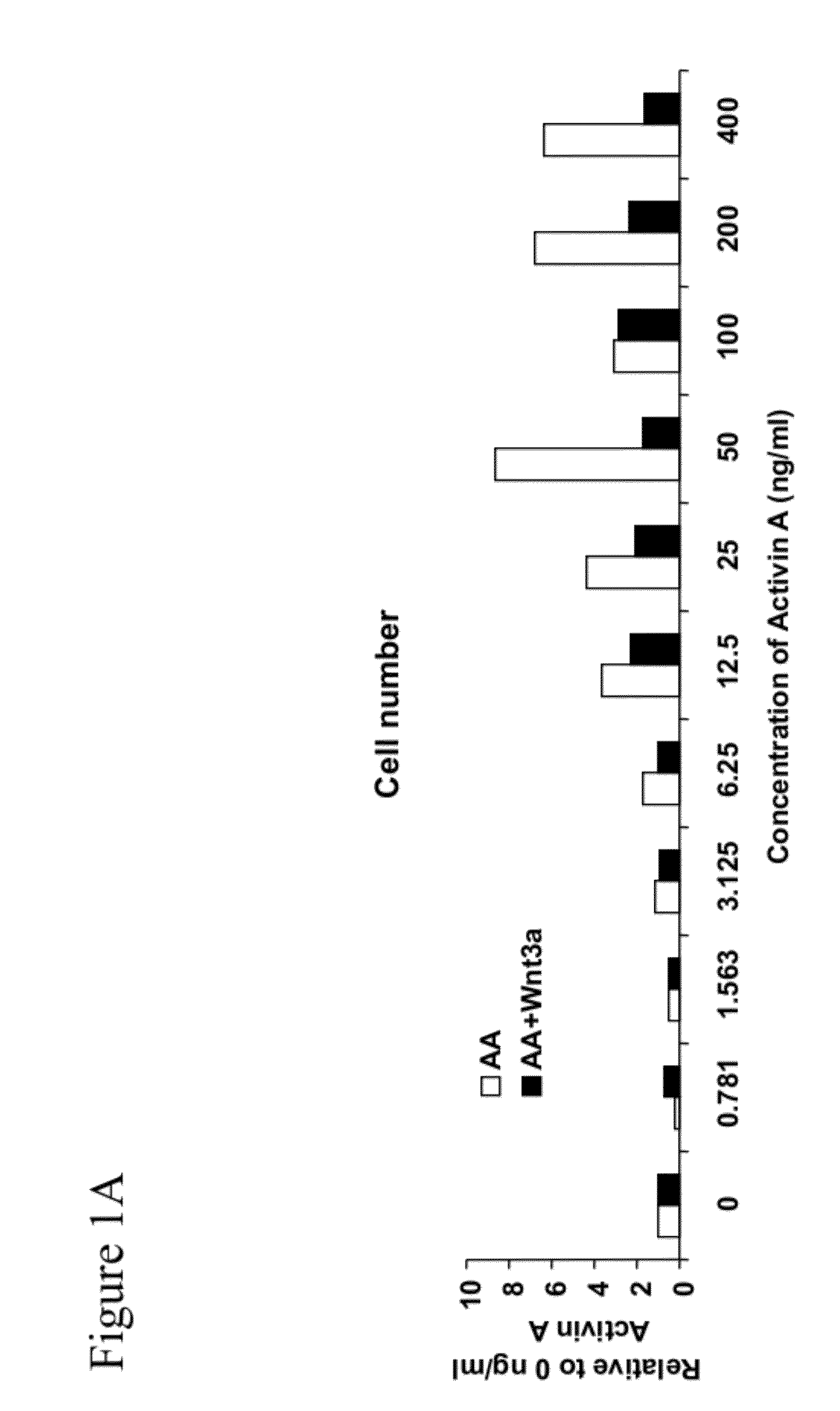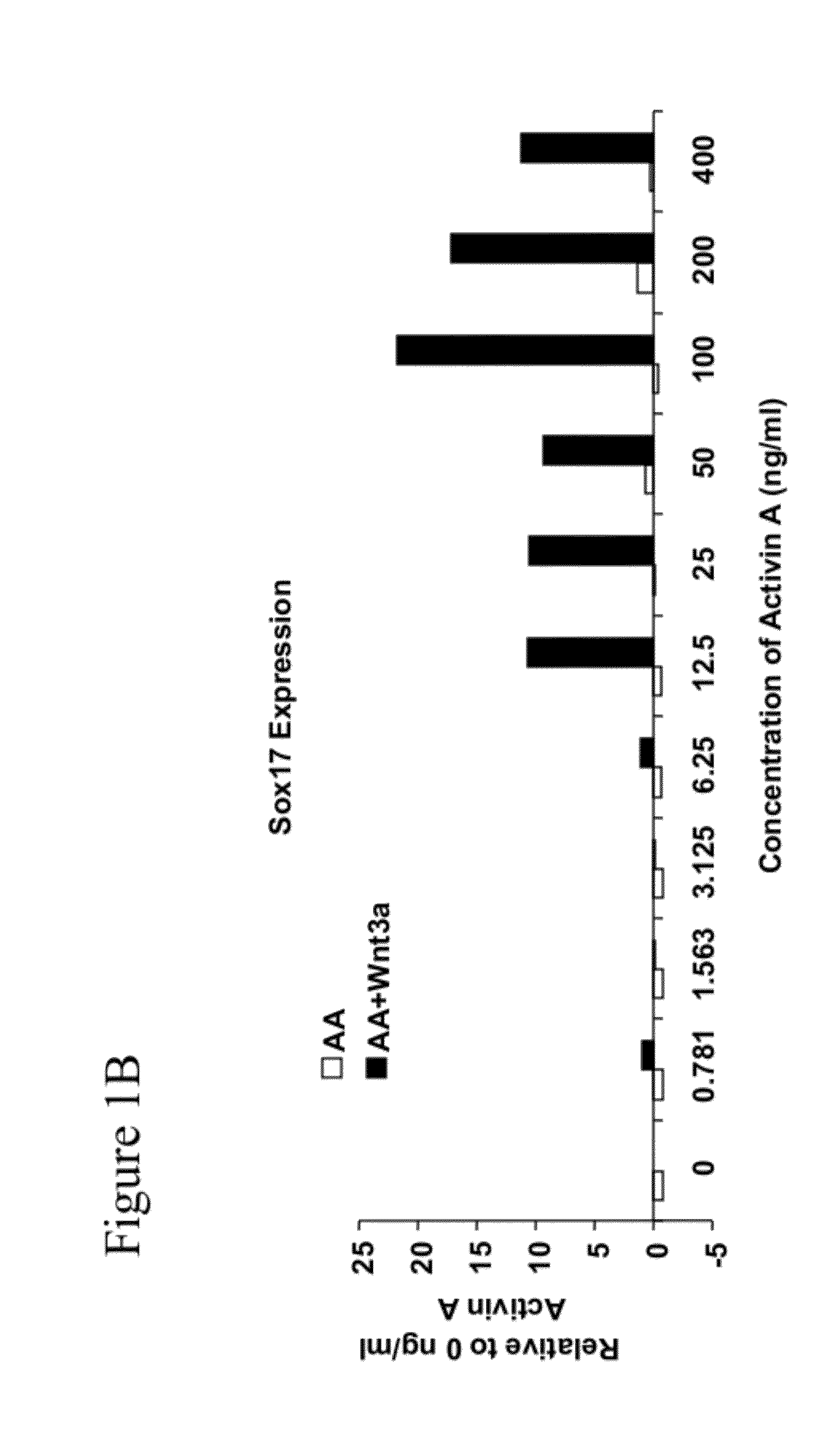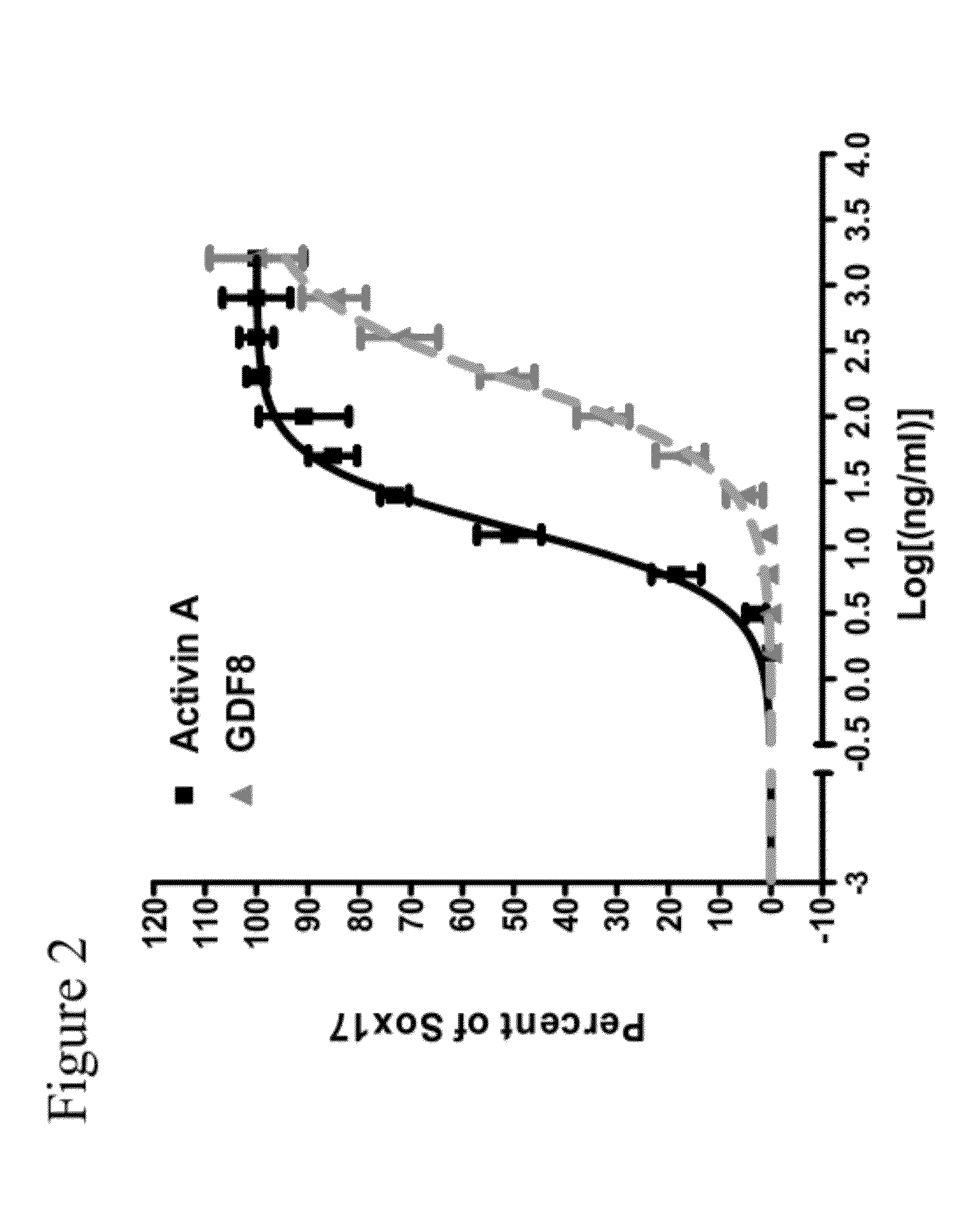Differentiation of Pluripotent Stem Cells
a technology differentiation, applied in the field of differentiation of pluripotent stem cells, can solve the problems of poor yield, large number of steps for activin isolation from natural sources, and limited quantity of results
- Summary
- Abstract
- Description
- Claims
- Application Information
AI Technical Summary
Problems solved by technology
Method used
Image
Examples
example 1
Human Embryonic Stem Cell Culture
[0292]The human embryonic stem cell lines H1, H7, and H9 were obtained from WiCell Research Institute, Inc., (Madison, Wis.) and cultured according to instructions provided by the source institute. The human embryonic stem cells were also seeded on plates coated with a 1:30 dilution of reduced growth factor MATRIGEL™ (BD Biosciences; Cat #356231) and cultured in MEF-conditioned medium supplemented with 8 ng / ml bFGF (R&D Systems; Cat #233-FB). The cells cultured on MATRIGEL™ were routinely passaged as clusters using collagenase IV (Invitrogen / GIBCO; Cat #17104-019), Dispase (Invitrogen; Cat #7105-041), or Liberase CI enzyme (Roche; Cat #11814435001). In some instances, the cells were passaged as single cells using ACCUTASE (Sigma; Cat # A6964).
[0293]Human embryonic stem cells used in these examples were maintained in an undifferentiated, pluripotent state with passage on average every four-days. Passage was performed by exposing cell cultures to a sol...
example 2
Bioassay for the Formation of Cells Expressing Markers Characteristic of the Definitive Endoderm Lineage
[0294]Activin A is an important mediator of differentiation in a broad range of cell types, including differentiation of embryonic stem cells to definitive endoderm. When human embryonic stem cells are treated with a combination of activin A and Wnt3a various genes representative of definitive endoderm are up-regulated. A bioassay that measures this differentiation in human embryonic stem cells was adapted in miniaturized format to 96-well plates for screening purposes. Validation was completed using treatment with commercial sources of activin A and Wnt3a recombinant proteins and measuring protein expression of the transcription factor SOX17, considered to be a representative marker of definitive endoderm.
[0296]Briefly, clusters of H1 human embryonic stem cells were grown on reduced growth factor MATRIGEL™ (Invitrogen; Cat #356231)-coated tissue culture plas...
example 3
Primary Screening: Effects of the Compounds of the Present Invention on the Differentiation of Human Embryonic Stem Cells into Cells Expressing Markers Characteristic of the Definitive Endoderm Lineage in the Absence of Activin A
[0302]Differentiation of pluripotent stem cells into cells expressing markers characteristic of the definitive endoderm lineage is mediated through a series of receptor-ligand interactions that in turn activate receptor kinases leading to phosphorylation and nuclear translocation of downstream substrates, eventually regulating expression of specific target genes. Optimal activation of these signaling cascades in some cell types may require inhibition of opposing default pathways. In other cases, redundant pathways involving alternative members of a larger kinase family may substitute in part for one or more signaling molecules. In other cases, canonical and non-canonical pathways may diverge with different initiating stimuli but may lead to a similar functio...
PUM
 Login to View More
Login to View More Abstract
Description
Claims
Application Information
 Login to View More
Login to View More - R&D
- Intellectual Property
- Life Sciences
- Materials
- Tech Scout
- Unparalleled Data Quality
- Higher Quality Content
- 60% Fewer Hallucinations
Browse by: Latest US Patents, China's latest patents, Technical Efficacy Thesaurus, Application Domain, Technology Topic, Popular Technical Reports.
© 2025 PatSnap. All rights reserved.Legal|Privacy policy|Modern Slavery Act Transparency Statement|Sitemap|About US| Contact US: help@patsnap.com



